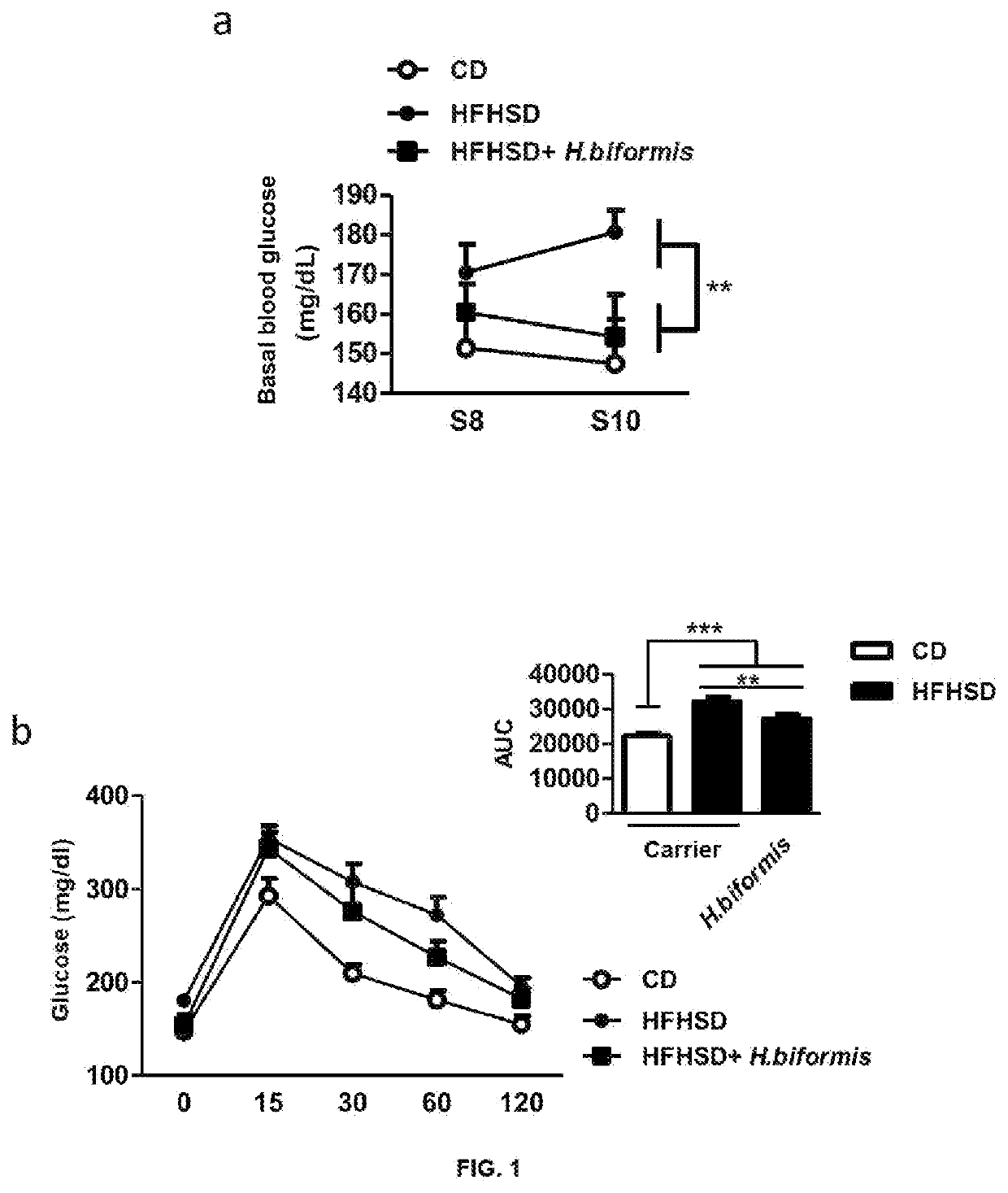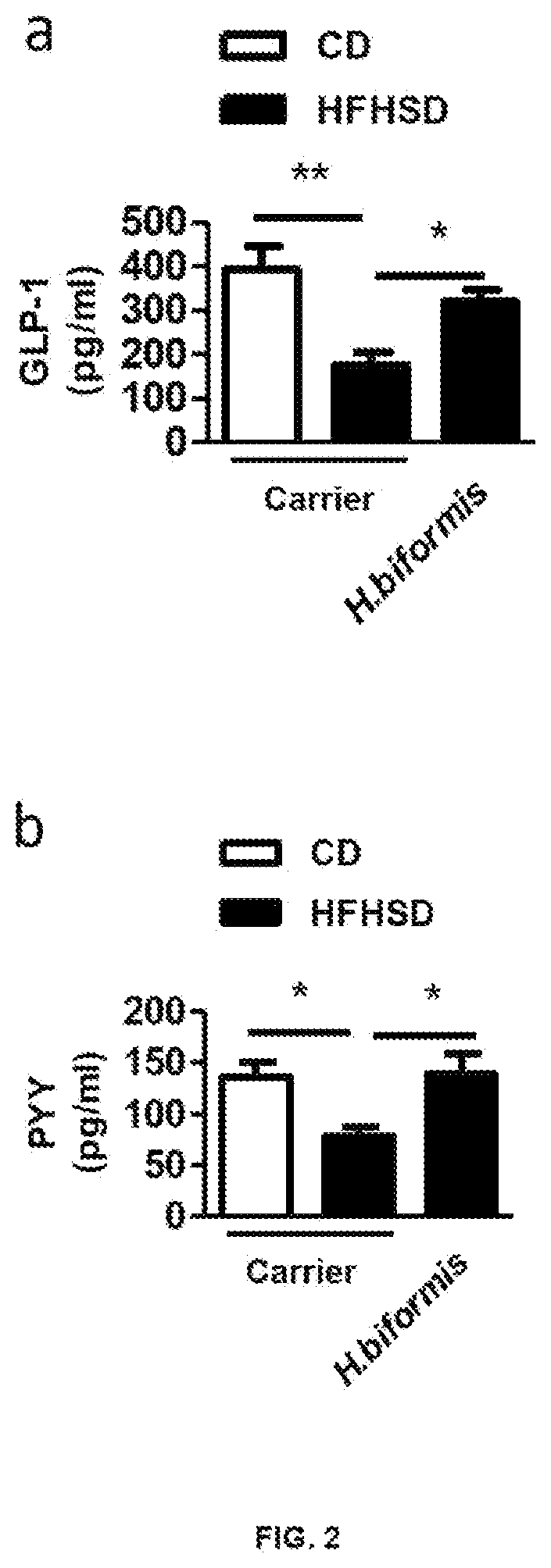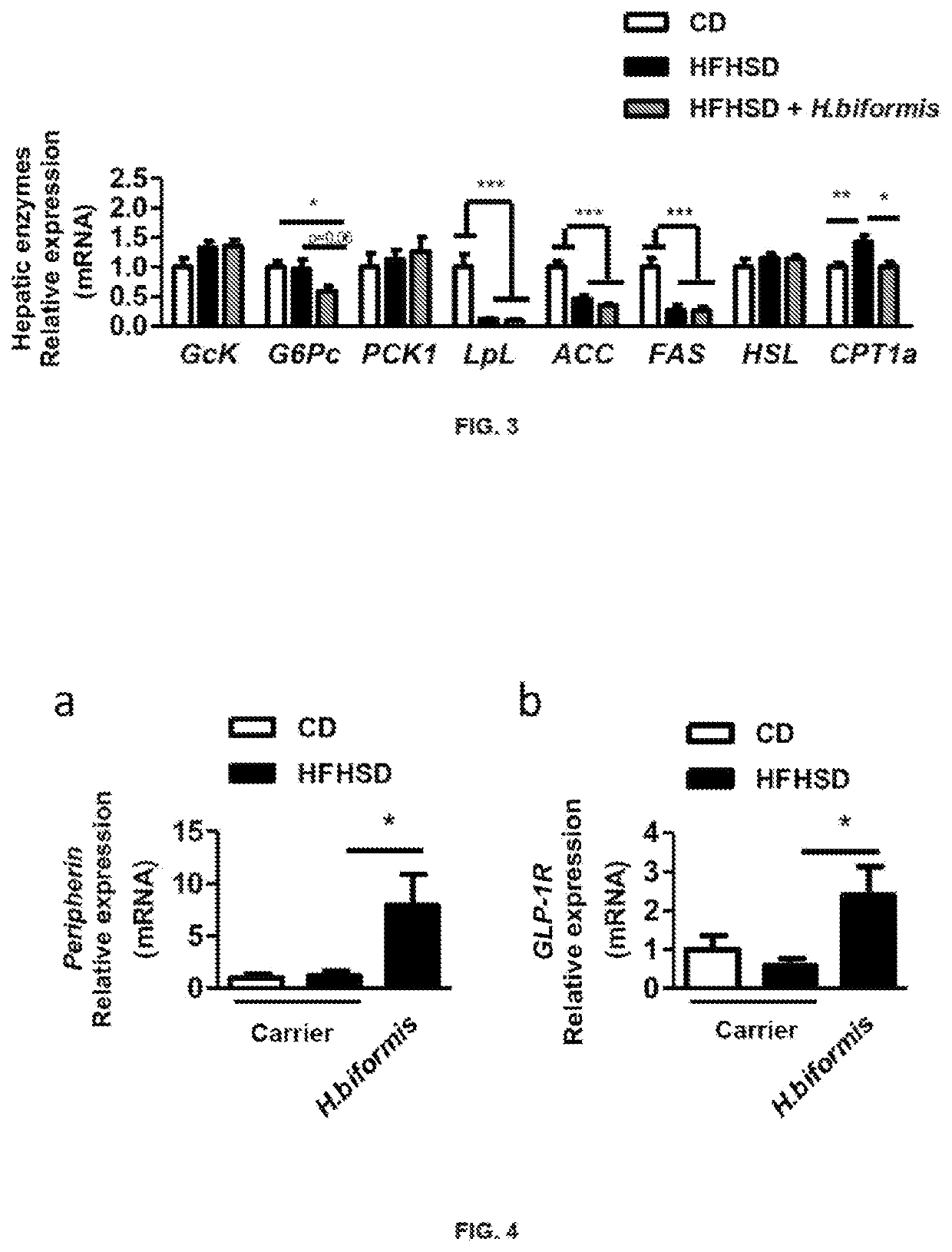Holdermanella sp. bacterium and use thereof
a technology of holdermanella and sp. bacterium, which is applied in the field of holdermanella, can solve the problems of increasing weight and body mass, and a major health challenge for peopl
- Summary
- Abstract
- Description
- Claims
- Application Information
AI Technical Summary
Benefits of technology
Problems solved by technology
Method used
Image
Examples
example 1
and Identification of Holdemanella biformis
[0091]Different intestinal bacteria were isolated from faeces from healthy volunteers. 1.25 grams of faeces were used and diluted in 10 mM phosphate buffer with 0.05% cysteine (1:10 dilution) containing a NaCl concentration of 130 mM (PBS) and homogenised in a Lab-Blender Stomacher 400 (Seward Medical, London, 35 UK). The said dilution was inoculated in 37.5 ml of intestinal bacteria medium (IBM), the composition of which is based on the media recommended in previous publications (Gibson, G. R., et al., Appl. Environ. Microbiol., 54 (1 1): 2750-5, 1988; Lesmes, U et al., J. Agric. Food Chem., 56: 5415-5421, 2008), with some modifications designed by the inventors:[0092]Main ingredients: distilled water (1600 ml), peptone water (4 g), NaHCO3 (4 g), CaCl2) (0.02 g), pectin (4 g), xylan (4 g), wheat bran extract (4 g), arabinogalactans (2 g), gum arabic (2 g), starch (10 g), casein (6 g), inulin (2 g), NaCl (0.2 g). Autoclaved at 121° C. for ...
example 2
of H. biformis Based on its Capacity to In Vitro Modulate Inflammation
[0102]In vitro assays were carried out in order to comparatively evaluate the immunomodulatory properties of the collection of bacterial isolates and thus select the bacterium capable of inducing the greatest anti-inflammatory response in classical monocytes, and therefore, with potential therapeutic interest in the treatment of inflammation associated with obesity and the alteration in glucose metabolism. To this end, cell suspensions of different bacteria were used as a stimulus of cultures of peripheral blood mononuclear cells (PBMCs) and the number of classical monocytes and the levels of the anti-inflammatory cytokine IL-4 with respect to the pro-inflammatory cytokine IFNγ were measured by flow cytometry.
[0103]Cultivation and Stimulation of PBMCs
[0104]From whole blood of healthy volunteers, Peripheral Blood Mononuclear Cells (PBMCs) were isolated using a Ficoll gradient (Ficoll Paque-Plus 17-1440-02, Bioscien...
example 3
isation of the Effects of H. biformis in the Regulation of Energy and Glucose Metabolism in an Animal Model of Obesity
Development of the Animal Model of Obesity and Sampling
[0108]Adult male C57BL / 6 mice (6-8 weeks, Charles River, Les Oncins, France), kept under controlled temperature (23° C.), relative humidity (40-50%) and 12-hour light / dark cycle conditions, were fed a high-calorie diet (HFHSD; D12451, Research diet, Brogaarden, Denmark) rich in fat (45% Kcal) and sucrose (17% Kcal) or a control diet with standard fat content and without sucrose (CD, 10% Kcal from fat; D12450K, Research diet, Brogaarden, Denmark) for 14 weeks. Daily, the mice fed the HFHSD diet received an oral dose of the bacterial strain object of the invention (1×108 colony-forming units [CFU]) suspended in 10% skim milk. The carrier or placebo (10% skim milk) was administered in the same way to both the control group with the obese phenotype (HFHSD) and the control group with the lean phenotype (CD) (n=10 mice...
PUM
 Login to View More
Login to View More Abstract
Description
Claims
Application Information
 Login to View More
Login to View More - R&D
- Intellectual Property
- Life Sciences
- Materials
- Tech Scout
- Unparalleled Data Quality
- Higher Quality Content
- 60% Fewer Hallucinations
Browse by: Latest US Patents, China's latest patents, Technical Efficacy Thesaurus, Application Domain, Technology Topic, Popular Technical Reports.
© 2025 PatSnap. All rights reserved.Legal|Privacy policy|Modern Slavery Act Transparency Statement|Sitemap|About US| Contact US: help@patsnap.com



